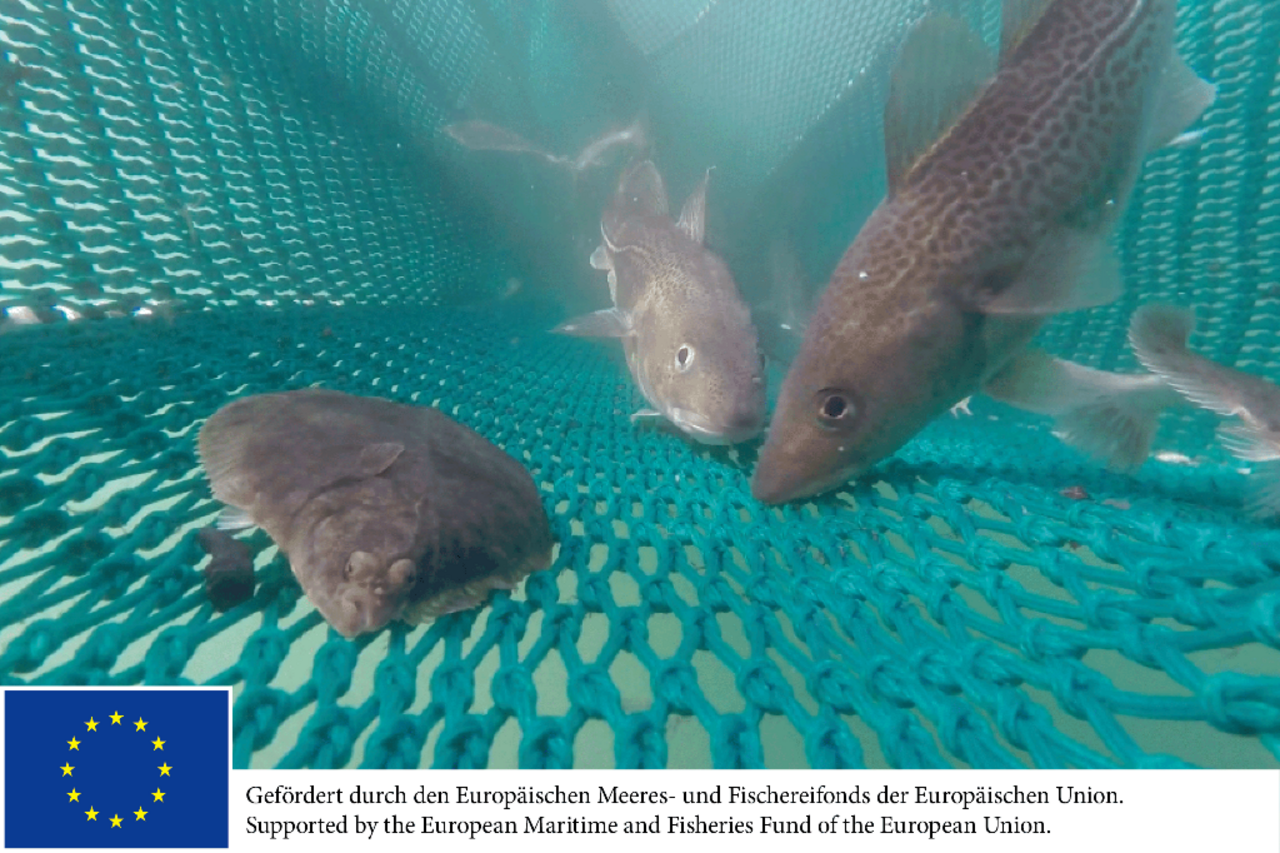Project
Population structure of cod and plaice in the Baltic Sea

Mixing dynamics of Baltic cod and stock identification of Baltic plaice
In the Baltic Sea, the stocks of only two demersal fish species - cod and plaice - have so far been regulated by catch quotas. The catch quotas determine the exploitation intensity of individual fish stocks. The goal is to achieve maximum sustainable yield from a stock. If stock allocation is unclear, there is a risk of under- or over-exploitation of neighboring stocks.
Stock mixing issues are highly debated and new evidence is urgently needed to improve fish stock assessments and the fisheries management. Genetics, partly in combination with other methods, are the approved tool to advance in the areas of stock mixing and stock identification.
Background and Objective
It is crucial for the catch advice to determine the proportion of mixing of cod of eastern and western origin reliably in the area (the western Baltic management area) and in the catches of the commercial fishery. The mixing proportions of cod in SD24 have direct impact on the catch estimates, especially for the Western Baltic cod stock.
The latest ICES benchmark of the cod stocks in the Baltic Sea (ICES 2015) determined that the stock assessment for the first time should take into account the significant mixing of Eastern and Western Baltic cod in the Arkona Sea (ICES Sub-Division (SD) 24).
While this new approach will significantly reduce the uncertainty attached to previous stock assessments, the data sources used to assess the spatio-temporal dynamics of mixing suffers from several sources of uncertainty. For instance, existing data on mixing proportions based on genetic analyses were only available from very few years, and mixing proportions based on otolith shape analyses were available for seven selected years (covering the time period 1996-2014). There are no data prior to 1994, while it is known that the stock was at a record high in the 1980s and this period is thus highly relevant for the determination of reference points. Genetic samples did not originate from commercial catches but from scientific samples, and thus they might not be representative for the commercial catch composition. Spatio-temporal coverage was very limited, and the results on the use of methods alternative to genetics (e.g. analyses of otolith ring structures) were preliminary. Therefore, we will use molecular markers (Single Nucleotide Polymorphisms (SNPs)) to discriminate between the two stocks in the Baltic Sea unambiguously.
The ICES benchmark of Baltic plaice (ICES 2015 WKPLE) concluded that “the stock entity of plaice in SD 21-23 and in SD 24-32 is less well defined and available studies are inconclusive. WKPLE reviewed arguments to include SD 21-23 and SD 24-32 in one stock and had not sufficient arguments to suggest a deviation from the present perception of two stocks, a Kattegat-Belt stock (SD21-23) and a Baltic stock (SD24-32). Examination of a combined 21-23 and 24-32 assessment was initiated but further work is required”. However, the “present perception” (two stocks) originated from a vague conclusion of an earlier ICES workshop (ICES 2013 WKPESTO), which analyzed virtually very limited data on stock identification of Baltic plaice. As a conclusion, the null hypothesis that there is only one plaice stock in the Baltic Sea, has never been firmly rejected. We want to test the null mhypothesis using genetics.
Target Group
EU, ICES, HELCOM, fisheries
Approach
Cod from commercial and scientific catches sampled in the mixing area will be assigned to their population of origin using single nucleotide polymorphisms (SNPs). The genetic assignment of individuals to different stocks will be compared to their otolith structures with the goal to test the assignment power of otoliths to infer the source populations of Baltic cod. The combination of different methods will allow us to determine present and historical mixing proportions in the Arkona Sea.
We will also use SNPs to analyze the population structure of plaice in the Baltic Sea.
Thünen-Contact

Involved Thünen-Partners
Involved external Thünen-Partners
- GEOMAR - Helmholtz Zentrum für Ozeanforschung Kiel
(Kiel, Deutschland) -
Universität Oslo, Centre for Ecological and Evolutionary Synthesis
(Oslo, Norwegen)
Funding Body
-
EU - European Maritime, Fisheries and Aquaculture Fund of the European Union (EMFAF)
(international, öffentlich)
Duration
2.2016 - 3.2021
More Information
Project status:
finished
Publications
- 0
Helmerson C, Weist P, Brieuc MSO, Maurstad MF, Schade FM, Dierking J, Petereit C, Knutsen H, Metcalfe J, Righton D, Andre C, Krumme U, Jentoft S, Hanel R (2023) Evidence of hybridization between genetically distinct Baltic cod stocks during peak population abundance(s). Evol Appl 16(7):1359-1376, DOI:10.1111/eva.13575
- 1
Schade FM, Weist P, Dierking J, Krumme U (2022) Living apart together: Long-term coexistence of Baltic cod stocks associated with depth-specific habitat use. PLOS One 17(9):e0274476, DOI:10.1371/journal.pone.0274476
- 2
Weist P, Jentoft S, Torresen OK, Schade FM, Pampoulie C, Krumme U, Hanel R (2022) The role of genomic signatures of directional selection and demographic history in the population structure of a marine teleost with high gene flow. Ecol Evol 12(12):e9602, DOI:10.1002/ece3.9602
- 3
Smolinski S, Schade FM, Berg F (2020) Assessing the performance of statistical classifiers to discriminate fish stocks using Fourier analysis of otolith shape. Can J Fish Aquat Sci 77(4):674-683, DOI:10.1139/cjfas-2019-0251
- 4
McQueen K, Casini M, Dolk B, Haase S, Hemmer-Hansen J, Hilvarsson A, Hüssy K, Mion M, Mohr T, Radtke K, Schade FM, Schulz N, Krumme U (2020) Regional and stock-specific differences in contemporary growth of Baltic cod revealed through tag-recapture data. ICES J Mar Sci 77(6):2078-2088, DOI:10.1093/icesjms/fsaa104
- 5
Weist P, Schade FM, Damerau M, Barth JM, Dierking J, Andre C, Petereit C, Reusch TBH, Jentoft S, Hanel R, Krumme U (2019) Assessing SNP-markers to study population mixing and ecological adaptation in Baltic cod. PLOS One 14(6):e0218127, DOI:10.1371/journal.pone.0218127
- 6
Moesgaard Albertsen C, Amosova V, Andersen M, Behrens JW, Willestofte Berg C, Bergenius M, Brander K, Cardinale M, Carlshamre S, Casini M, Cormon X, Eero M, Gertseva V, Haase S, Krumme U, McQueen K, Pierce ME, Schade FM, Strehlow HV, Weltersbach MS, et al (2019) Benchmark workshop on Baltic cod stocks (WKBALTCOD2). Copenhagen: ICES, 310 p, ICES Sci Rep 1(9), DOI:10.17895/ices.pub.4984
- 7
Schade FM, Weist P, Krumme U (2019) Evaluation of four stock discrimination methods to assign individuals from mixed-stock fisheries using genetically validated baseline samples. Mar Ecol Progr Ser 627:125-139, DOI:10.3354/meps13061
- 8
Eero M, Carlshamre S, Stepputtis D, Krumme U, Maioli F, Prista N, Schade FM, Santos J, Noack T, Valentinsson D, Nilsson H, Feekings JP, Storr-Paulsen M, Plikshs M, Bergström U, Håkansson KB, Radtke K (2019) Report on eastern baltic cod bycatch in non-targeted fisheries, mixing with western baltic cod in SD24, and stock situation in SDS 27-32. Copenhagen: ICES, 69 p, ICES Sci Rep 1(76), DOI:10.17895/ices.pub.5635

![[Translate to English:] [Translate to English:]](/media/_processed_/2/9/csm_Embryo-Exp_Gelege_9F_dpf5-200513111619_c8534a8199.jpg)
![[Translate to English:] [Translate to English:]](/media/_processed_/2/9/csm_Embryo-Exp_Gelege_9F_dpf5-200513111619_9027994d44.jpg)





